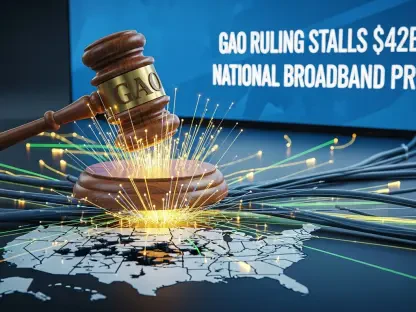The telecommunications industry is currently experiencing a profound transformation characterized by the rapid deployment of 5G technologies. Nokia, a prominent figure in this sector, faces significant challenges amid economic turmoil. Recent adjustments to Nokia’s profit forecast, driven by external economic pressures such as a weakened US dollar and new US trade tariffs, raise questions about the company’s ability to sustain its 5G growth strategy. These developments are crucial in understanding the broader implications for the telecommunications industry and the strategic directions companies must consider moving forward.
Nokia and the Telecommunications Industry Landscape
The telecommunications industry holds a vital position in the global market, acting as a backbone for modern digital communication. It encompasses various segments, including mobile communication, broadband, and digital services, all pivotal in connecting people and devices worldwide. With technological advancements such as 5G and IoT leading the charge, the industry continues to evolve rapidly. Key market players like Nokia, Ericsson, and Huawei play critical roles in shaping the competitive landscape. Regulatory frameworks and policies, particularly concerning spectrum allocation and cybersecurity, also significantly influence the industry’s direction, guiding innovation, and ensuring industry compliance.
Industry Trends and Projections
Current Trends Shaping the 5G Sector
The 5G sector is undergoing transformative changes, driven by several significant trends. Innovations in AI, IoT, and edge computing are powering new applications in smart cities, healthcare, and autonomous vehicles. Consumer behavior is shifting towards ultra-fast connectivity and higher data consumption, prompting companies like Nokia to refine their offerings. Market drivers include increased demand for low-latency communication and massive IoT integration. Opportunities for growth arise in private 5G networks, where industries seek tailored solutions for specific operational needs, enabling enhanced efficiency and security.
Future Market Dynamics
The telecommunications industry is poised for substantial growth, with 5G anticipated to be a powerhouse in this expansion. Market projections for 2025 and beyond highlight robust performance indicators, driven by increased 5G adoption globally. Companies face the challenge of scaling infrastructure to meet the demand. Analyzing performance metrics and market data, organizations can anticipate trends that will shape future revenues. As the 5G ecosystem continues to evolve, staying at the forefront of technological advancements will be crucial for industry players seeking to maintain or secure competitive positions.
Challenges in the 5G Industry
The path toward widespread 5G adoption is paved with numerous obstacles. Technological issues such as network integration and standardization pose challenges to seamless implementation. Regulatory hurdles, including securing the necessary spectrum and meeting cybersecurity standards, are ongoing concerns for industry leaders. Additionally, market dynamics, compounded by geopolitical tensions and trade policies, can disrupt supply chains and affect financial stability. Strategies to overcome these challenges involve fostering innovation, forming strategic partnerships, and adopting adaptive business models to navigate fluctuating landscapes.
Navigating the Regulatory Landscape
The telecommunications industry’s regulatory environment is complex, shaped by laws and standards impacting every facet of business operations. Compliance with international standards and protecting consumer data are paramount concerns. Recent regulatory changes, particularly around spectrum allocations and cybersecurity protocols, necessitate agile adaptation by industry players. Security measures are bolstered to prevent data breaches, maintaining consumer trust. Navigating this landscape requires an understanding of global regulations and strategically aligning business practices to ensure minimal disruption and continued growth.
The Future of 5G and Nokia’s Strategic Position
The future of the 5G industry is bright, with emerging technologies like AI-driven analytics and enhanced mobile broadband set to redefine connectivity. Customs and preferences could lead to market disruptors reshaping consumer expectations. For Nokia, innovation remains a cornerstone of its growth strategy. As the company strengthens its foothold in private 5G networks, it positions itself strategically to capitalize on evolving industry needs. A focus on sustainable practices and adapting to global economic conditions will be pivotal in maintaining its competitive advantage in a rapidly progressing landscape.
Conclusion and Strategic Recommendations
Reflecting on the intricate interplay between external economic forces and strategic opportunities, Nokia’s navigation of these challenges highlights both the complexities and potential within the telecommunications sector. To enhance its 5G growth trajectory, Nokia could prioritize investment in innovation and strategic partnerships, capitalizing on niche markets like private 5G networks. Emphasizing agile regulatory adaptation and proactive market analysis can fortify its competitive stance. The road ahead for Nokia and the wider industry is rife with opportunities, provided strategic endeavors are informed by robust market intelligence and resilient operational frameworks. Embracing these strategies may position Nokia advantageously within the evolving 5G paradigm.









